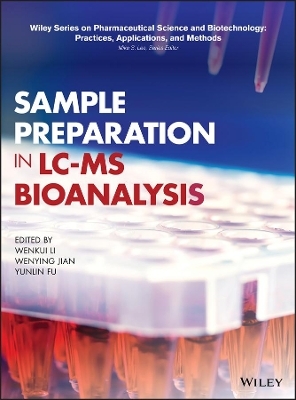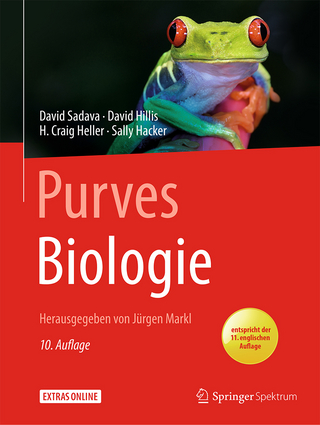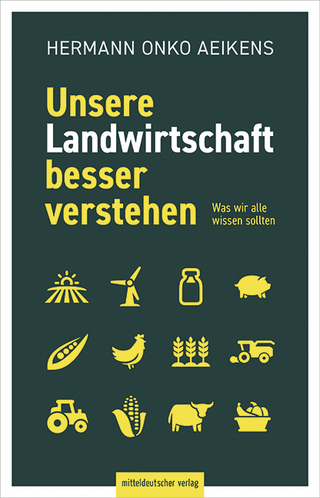
Sample Preparation in LC-MS Bioanalysis
John Wiley & Sons Inc (Verlag)
978-1-119-27429-2 (ISBN)
Following in the footsteps of the previously published Handbook of LC-MS Bioanalysis, this book is a thorough and timely guide to all important sample preparation techniques used for quantitative Liquid Chromatography–Mass Spectrometry (LC-MS) bioanalysis of small and large molecules. LC-MS bioanalysis is a key element of pharmaceutical research and development, post-approval therapeutic drug monitoring, and many other studies used in human healthcare.
While advances are continually being made in key aspects of LC-MS bioanalysis such as sensitivity and throughput, the value of research/study mentioned above is still heavily dependent on the availability of high-quality data, for which sample preparation plays the critical role. Thus, this text provides researchers in industry, academia, and regulatory agencies with detailed sample preparation techniques and step-by-step protocols on proper extraction of various analyte(s) of interest from biological samples for LC-MS quantification, in accordance with current health authority regulations and industry best practices. The three sections of the book with a total of 26 chapters cover topics that include:
Current basic sample preparation techniques (e.g., protein precipitation, liquid-liquid extraction, solid-phase extraction, salting-out assisted liquid-liquid extraction, ultracentrifugation and ultrafiltration, microsampling, sample extraction via electromembranes)
Sample preparation techniques for uncommon biological matrices (e.g., tissues, hair, skin, nails, bones, mononuclear cells, cerebrospinal fluid, aqueous humor)
Crucial aspects of LC-MS bioanalytical method development (e.g., pre-analytical considerations, derivation strategies, stability, non-specific binding) in addition to sample preparation techniques for challenging molecules (e.g., lipids, peptides, proteins, oligonucleotides, antibody-drug conjugates)
Sample Preparation in LC-MS Bioanalysis will prove a practical and highly valuable addition to the reference shelves of scientists and related professionals in a variety of fields, including pharmaceutical and biomedical research, mass spectrometry, and analytical chemistry, as well as practitioners in clinical pharmacology, toxicology, and therapeutic drug monitoring.
WENKUI LI is a Senior Fellow at the Novartis Institutes for BioMedical Research Pharmacokinetic Sciences. He serves on the Editorial Board of Biomedical Chromatography. WENYING JIAN is a Senior Principal Scientist in Janssen Research and Development at the Johnson & Johnson Company. She serves on the Editorial Board of Journal of Pharmacological and Toxicological Methods. YUNLIN FU is an Investigator at the Novartis Institutes for BioMedical Research Pharmacokinetic Sciences.
List of Contributors xvi
Preface xx
List of Abbreviations xxii
Part I Current Sample Preparation Techniques in LC‐MS Bioanalysis 1
1 Basic Sample Preparation Techniques in LC‐MS Bioanalysis: Protein Precipitation, Liquid–Liquid Extraction, and Solid‐Phase Extraction 3
Wenkui Li, Wenying Jian, and Yunlin Fu
1.1 Introduction 3
1.2 Physicochemical Properties of Drugs and Their Metabolites 4
1.3 Pre‐analytical Variables of Analyte(s) of Interest in Biological Matrix 5
1.4 Most Commonly Used Sample Preparation Methods in LC‐MS Bioanalysis 7
References 27
2 Online Extraction and Column Switching Techniques in LC‐MS Bioanalysis 31
Yan Mao and Mike (Qingtao) Huang
2.1 Introduction 31
2.2 System Configuration 32
2.3 Commonly Used Online Extraction Techniques 33
2.4 Considerations for Utilizing Online Extraction Techniques 40
2.5 Summary 41
References 42
3 Equilibrium Dialysis, Ultracentrifugation, and Ultrafiltration in LC‐MS Bioanalysis 45
Theo de Boer and Henri Meijering
3.1 Introduction 45
3.2 Challenges and Considerations 46
3.3 Experimental Procedures 46
3.4 Summary 49
References 51
4 Phospholipid Depletion Techniques in LC‐MS Bioanalysis 52
Stacy Brown and Jennifer Carmical
4.1 Introduction 52
4.2 Impact of Phospholipids on Bioanalytical Methods 52
4.3 Investigating Matrix Effects Associated with Phospholipids 55
4.4 Minimizing Matrix Effects Associated with Phospholipids 56
4.5 Removing Phospholipids Prior to LC‐MS Analysis 57
4.6 Example Methods that Demonstrate Successful Phospholipid Removal 60
4.7 Conclusions 63
Acknowledgement 64
References 64
5 Salting‐out Assisted Liquid–Liquid Extraction (SALLE) in LC‐MS Bioanalysis 68
Jun Zhang and Xin Xiong
5.1 Introduction 68
5.2 Considerations in Developing a SALLE Method 68
5.3 Combination of SALLE with Other Extraction Techniques 72
5.4 Matrix Effect in SALLE 72
5.5 Miniaturization and Automatization 73
5.6 Summary 73
References 73
6 Supported Liquid Extraction (SLE) in LC‐MS Bioanalysis 76
Zhongzhe Cheng and Hongliang Jiang
6.1 Introduction 76
6.2 Principle of SLE 76
6.3 Advantages and Limitation of SLE in Quantitative LC‐MS Bioanalysis 77
6.4 Key Consideration in Developing Robust SLE‐LC‐MS Bioanalytical Method 79
6.5 Representative Protocols 80
6.6 Summary 81
References 82
7 Immunocapture in LC‐MS Bioanalysis 85
Ang Liu
7.1 Introduction 85
7.2 Experimental Workflow and Optimization 85
7.3 Considerations on the Selection of Capture Reagents and the Limitations 86
7.4 Platforms for Immunocapture 89
7.5 Internal Standard Selection 89
7.6 Performance Evaluation 90
7.7 Applications and Representative Protocols 91
7.8 Validation Criteria and Regulatory Considerations 94
7.9 Summary 95
References 95
8 Microextraction Techniques in LC‐MS Bioanalysis 98
Marcio Rodrigues, Ana Fortuna, Amilcar Falcao, and Gilberto Alves
8.1 Introduction 98
8.2 Solid‐Phase Microextraction 99
8.3 Liquid‐Phase Microextraction 108
8.4 Summary 113
Acknowledgements 113
References 113
9 Microsampling Applications with LC‐MS Bioanalysis 117
Chester L. Bowen and Matthew Barfield
9.1 Introduction 117
9.2 Plasma Microsampling Considerations 118
9.3 Dried Blood (Matrix) Spot (DBS) Considerations 121
9.4 Volumetric Absorptive Microsampling (VAMS) 123
9.5 Emerging Techniques 125
9.6 Summary 126
Acknowledgements 126
References 126
10 Nanomaterials for Sample Preparation in LC‐MS Bioanalysis 128
Rodrigo A. Gonzalez‐Fuenzalida, Neus Jornet‐Martinez, Rosa Herraez‐Hernandez, and Pilar Campins‐Falco
10.1 Introduction 128
10.2 Carbon Nanomaterials 128
10.3 Metallic NPs 133
10.4 Nanoporous Materials 135
10.5 Future Perspectives 136
Acknowledgements 136
References 137
11 Sample Preparation via Molecularly Imprinted Polymers (MIPs) in LC‐MS Bioanalysis 139
Myriam Diaz‐Alvarez and Antonio Martin‐Esteban
11.1 Introduction 139
11.2 Preparation of MIPs 139
11.3 MIPs for Sample Preparation in Bioanalysis 142
11.4 Fragment Imprinting 147
11.5 Summary 147
References 147
12 Stir‐bar Sorptive Extraction for Sample Preparation in LC‐MS Bioanalysis 152
Maria Kechagia, Maria Kissoudi, and Victoria F. Samanidou
12.1 Introduction 152
12.2 SBSE Principle 153
12.3 SBSE Steps 154
12.4 Derivatization 155
12.5 Coating Materials 156
12.6 Applications 158
12.7 Summary 161
References 161
13 Monolithic Spin Column Extraction in LC‐MS Bioanalysis 163
Akira Namera and Takeshi Saito
13.1 Introduction 163
13.2 History of Monoliths 163
13.3 The Use of Monolith as Sorbent in Solid‐Phase Extraction 164
13.4 Monolithic Spin Column for Sample Preparation 165
References 171
14 Aptamer‐based Sample Preparation in LC‐MS Bioanalysis 174
Fuyou Du, Zongyu Wei, Qiulian Zeng, and Guihua Ruan
14.1 Introduction 174
14.2 Aptamer‐based Sample Preparation 175
14.3 Representative Protocols 181
14.4 Summary 185
Acknowledgements 185
References 185
15 Sample Extraction via Electromembrane in LC‐MS Bioanalysis 188
Maria Ramos‐Payan, Rut Fernandez‐Torres, and Miguel Angel Bello‐Lopez
15.1 Introduction 188
15.2 Factors Affecting the Extraction Efficiency of EME 190
15.3 Recent Developments in EME 191
15.4 Bioanalytical Applications 193
15.5 Summary 197
References 197
Part II Matrix‐specific Sample Preparation Techniques in LC‐MS Bioanalysis 201
16 Tissue Sample Preparation in LC‐MS Bioanalysis 203
Hong Gao and John Williams
16.1 Introduction 203
16.2 Selection of Homogenization Method 203
16.3 Common Protocols 209
16.4 Protocols for Special Tissue Sample Preparation 210
16.5 Challenges Associated with Tissue Homogenization 212
16.6 Summary 214
References 214
17 Sample Preparation for LC‐MS Bioanalysis of Peripheral Blood Mononuclear Cells 217
Yunlin Fu and Wenkui Li
17.1 Introduction 217
17.2 Peripheral Blood Mononuclear Cells (PBMCs) 217
17.3 Sample Preparation Workflow for LC‐MS Bioanalysis of PBMC Samples 217
17.4 Representative Protocols 220
17.5 Summary 222
References 222
18 Sample Preparation for LC‐MS Bioanalysis of Urine, Cerebrospinal Fluid, Synovial Fluid, Sweat, Tears, and Aqueous Humor Samples 225
Allena J. Ji
18.1 Introduction 225
18.2 Sample Preparation Methods for Urine 225
18.3 Sample Preparation Methods for Cerebrospinal Fluid 230
18.4 Sample Preparation Methods for Synovial Fluid 231
18.5 Sample Preparation Methods for Sweat 231
18.6 Sample Preparation Methods for Tears 234
18.7 Sample Preparation Methods for Aqueous Humor 236
18.8 Summary 236
References 236
19 Sample Preparation for LC‐MS Bioanalysis of Liposomal Samples 238
Wenying Jian, Rao N.V.S. Mamidi, and Naidong Weng
19.1 Introduction 238
19.2 Major Types of Sample Extraction Techniques for Liposomal Samples 239
19.3 Key Considerations in Sample Preparation for Liposomal Samples 242
19.4 Typical Protocols 245
19.5 Summary 246
References 246
Part III Sample Preparation Techniques for LC‐MS Bioanalysis of Challenging Molecules 249
20 Key Pre‐analytical Considerations in LC‐MS Bioanalysis 251
Fumin Li, Bruce J. Hidy, and Rand G. Jenkins
20.1 Introduction 251
20.2 The Pre‐analytical Phase 251
20.3 Bioanalytical Evaluation‐planning 253
20.4 Common Pre‐analytical Issues in LC‐MS Bioanalysis 255
20.5 Summary 258
References 259
21 Derivatization in Sample Preparation for LC‐MS Bioanalysis 260
Dafang Zhong and Yunting Zhu
21.1 Introduction 260
21.2 Derivatization Strategies 260
21.3 Key Considerations for Derivatization 264
21.4 Application of Derivatization for Quantitative LC‐MS Bioanalysis 265
21.5 Summary 270
References 271
22 Sample Preparation for LC‐MS Bioanalysis of Lipids 275
Samuel Hofbauer, Ashkan Salamatipour, Ian A. Blair, and Clementina Mesaros
22.1 Introduction 275
22.2 Sample Preparation for LC‐MS Bioanalysis of Lipids 275
22.3 Case Studies of LC‐MS Bioanalysis of Lipids 280
22.4 Summary 281
References 282
23 Sample Preparation for LC‐MS Bioanalysis of Peptides 284
Long Yuan
23.1 Introduction 284
23.2 Properties of Peptides and Sample Pretreatment 285
23.3 Sample Preparation Strategies 287
23.4 Conclusions 296
Acknowledgements 297
References 297
24 Sample Preparation for LC‐MS Bioanalysis of Proteins 304
Nico van de Merbel
24.1 Introduction 304
24.2 Intact Versus Digested Protein Analysis 305
24.3 Enzymatic Digestion 306
24.4 Protein Depletion 308
24.5 Protein Extraction (Before Digestion) 308
24.6 Peptide Extraction (After Digestion) 312
24.7 Combined Protein and Peptide Extraction 314
24.8 Summary 314
References 315
25 Sample Preparation for LC‐MS Bioanalysis of Oligonucleotides 319
Michael G. Bartlett, Jaeah Kim, Babak Basiri, and Ning Li
25.1 Introduction 319
25.2 Properties of Oligonucleotides and Associated Challenges in LC‐MS Bioanalysis 319
25.3 Classes of Oligonucleotides 322
25.4 Major Types of Sample Extraction Techniques 323
25.5 Key Considerations in Sample Preparation for LC‐MS Bioanalysis of Oligonucleotides 327
25.6 Representative Protocols 328
25.7 Summary 330
References 330
26 Sample Preparation for LC‐MS Bioanalysis of Antibody–Drug Conjugates 335
Cong Wei and Ragu Ramanathan
26.1 Introduction 335
26.2 Properties of ADC and Challenges for Sample Preparation 335
26.3 Sample Preparation Methods and Common Protocols 342
26.4 Future Perspective 347
Acknowledgements 348
References 348
Index 351
| Erscheinungsdatum | 23.03.2019 |
|---|---|
| Reihe/Serie | Wiley Series on Pharmaceutical Science and Biotechnology: Practices, Applications and Methods |
| Verlagsort | New York |
| Sprache | englisch |
| Maße | 216 x 277 mm |
| Gewicht | 1270 g |
| Themenwelt | Naturwissenschaften ► Biologie |
| Naturwissenschaften ► Chemie | |
| ISBN-10 | 1-119-27429-X / 111927429X |
| ISBN-13 | 978-1-119-27429-2 / 9781119274292 |
| Zustand | Neuware |
| Haben Sie eine Frage zum Produkt? |
aus dem Bereich


